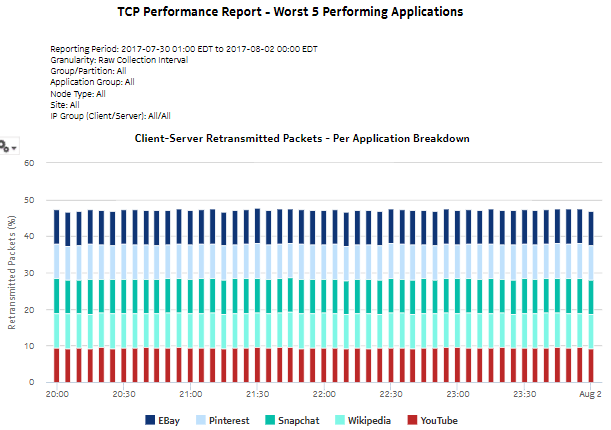TCP Performance Report - Worst Performing Applications report
TCP Performance Report - Worst Performing Applications report overview
The TCP Performance Report - Worst Performing Applications report shows the most poorly performing applications in terms of retransmitted packets or session establishment delay.
Use cases
User quality of experience—Use the report to identify low-quality application delivery and address user QoE issues by monitoring TCP performance to see the worst performing applications.
Report characteristics
The following table lists the principal report characteristics.
